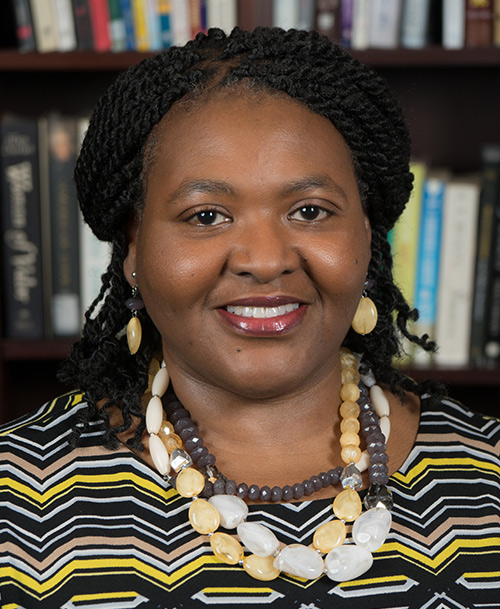After Michele (not her real name), a black student from the rural South, attended the first session of Felicia Mensah’s science methods course at Teachers College in spring 2012, she was so astounded that she called home.
“I was like, ‘Dad, guess what? I’m taking a class with an African-American professor!’” Michele later told Mensah. “She’s a woman.”
For her part, Mensah, if not equally astounded, certainly considered Michele a rarity – and with good reason.

SHE REALLY WANTS TO KNOW In her Science Methods course at TC, Mensah makes a point of sounding out students about their educational experiences, and even home and early school experiences regarding race and racism.
“The significant decrease in the number of Black teachers has been so drastic that scholars have referred to them as an ‘endangered species,’” Mensah, Professor of Science & Education, and Associate Dean, writes in her paper, “Finding Voice and Passion: Critical Race Theory Methodology in Science Teacher Education,” published in February by the American Educational Research Journal. “The educational landscape post-Brown [Brown v. Board of Education, the 1954 Supreme Court decision striking down school segregation] has not yet rebounded from the mass exodus of Black teachers, which includes the mass firing of Black teachers, principals and superintendents. The effects are not only seen in student learning but also on who enters teaching as a profession.”
Mensah’s paper chronicles Michele’s journey from childhood through her first full-time teaching appointment as an elementary school teacher in New York City. It describes how Michele, “a darker complexion African American woman,” learns early on that beauty is associated with lighter skin tone; how she repeatedly experiences being “the only one” in all or mostly white classrooms; and how she is classified as learning disabled by white teachers who tell her that she hasn’t learned to apply herself “because of my skin.” As a preservice teacher during student teaching, Michele encounters a white cooperating teacher who insists that she teach by committing a script to memory, telling her, “You shouldn’t say it like this; you should say it like that.” And “Finding Voice and Passion” also vividly conveys Michele’s disappointment with classroom discussions of race and education that fail to ask, “What does that look like to you? What does that look like to your students?”
The educational landscape post-Brown has not yet rebounded from the mass exodus of Black teachers, which includes the mass firing of Black teachers, principals and superintendents. The effects are not only seen in student learning but also on who enters teaching as a profession.”
—Felicia Mensah
These experiences are so alienating that Michele is on the verge of giving up on teaching – until she studies with Mensah, who consciously works to support women of color who aspire to teach. Mensah applies the lens of Critical Race Theory (CRT), which holds that race and racism are defining characteristics of American society and also in teacher education. She provides Michele – and all her preservice teachers – “multiple opportunities to write and talk about their educational experiences, and even home and early school experiences regarding race and racism.”
Michele responds powerfully to what Mensah terms “the centrality of naming her own experience.” Or as she tells Mensah at one point: “When we reflected in your class, you really wanted to know what it was that we were thinking, our experiences and again, relating it back to what we’re gonna do as teachers, and then how this then relates back to the readings” that Mensah provides in her courses. Michele then applies the same approach in her apprentice teaching at a New York City public school – and when a supervisor tries to dissuade her from using a hard-boiled egg to suggest to students how tectonic plates behave when the earth crust heats up, she calmly stands her ground of “teaching sound science.”
“I found my voice,” she later tells Mensah. “This is what caused me to stay in teaching.”